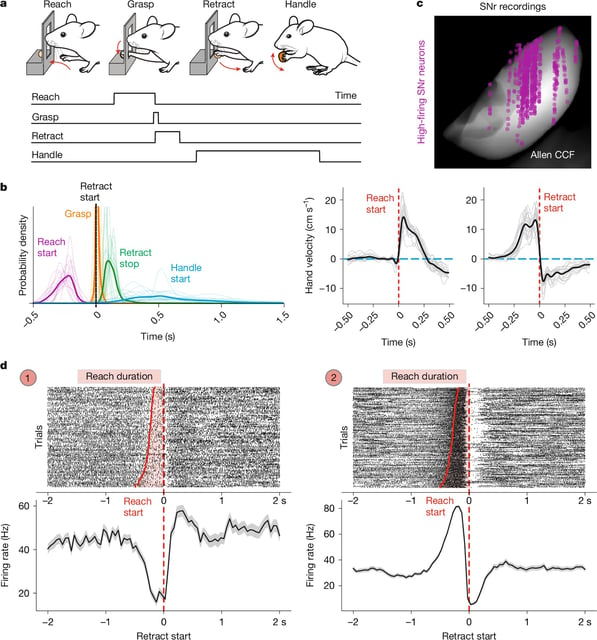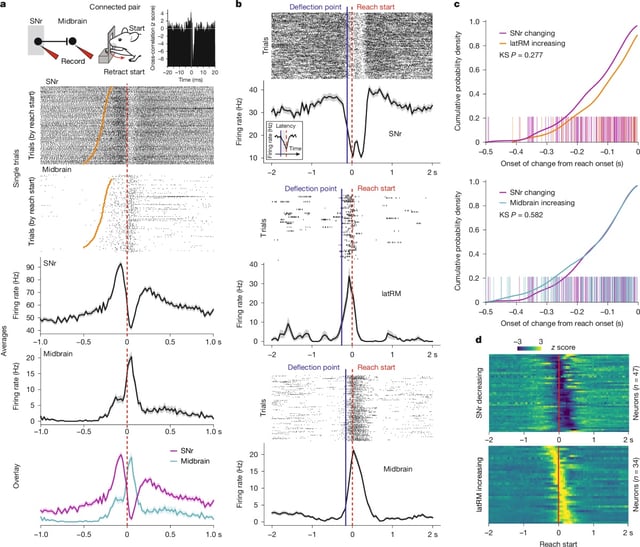Overview
- Researchers recorded SNr neuron activity in mice during a forelimb pellet-reaching task and found highly dynamic firing patterns precisely aligned with reach, grasp and retraction phases.
- Individual SNr cells switch multiple times between increased and decreased activity to selectively license or suppress discrete movements.
- Optogenetic activation of SNr neurons effectively blocked specific motor actions, confirming their causal role in controlling movement.
- These findings overturn the traditional continuous-brake model of basal ganglia function by revealing a finely tuned, movement-specific gating mechanism.
- Insights into SNr signaling dynamics could inform therapies aimed at restoring balanced go-and-stop signals in Parkinson’s disease.



